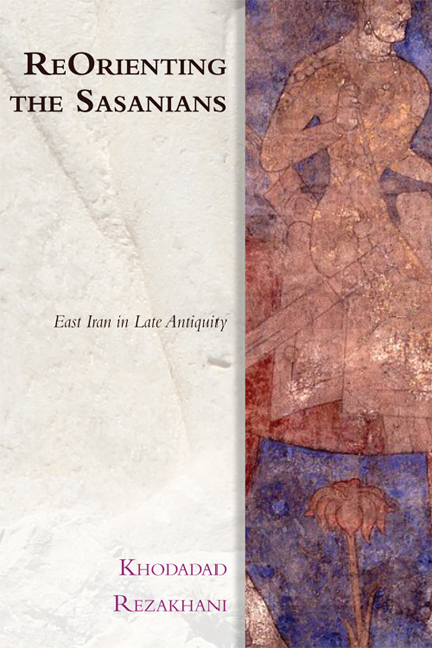Book contents
- Frontmatter
- Contents
- List of Illustrations
- Acknowledgements
- Series Editor's Preface
- Maps
- Preface
- Introduction
- 1 The Sasanians and the Sistanis
- 2 The Kushans and the Sasanians
- 3 The Kushano-Sasanians in East Iran
- 4 The Iranian Huns and the Kidarites
- 5 The Alkhans in the Southern Hindu Kush
- 6 The Hephthalite ‘Empire’ and its Successors
- 7 Sogdiana in the Kidarite and Hephthalite Periods
- 8 The Nēzak and Turk Periods
- 9 Tokharistan and Sogdiana in the Late Sasanian Period
- 10 General Conclusions and Postscript
- 11 Epilogue and Excursus on the Shahnameh
- Bibliography
- Index
6 - The Hephthalite ‘Empire’ and its Successors
Published online by Cambridge University Press: 07 December 2017
- Frontmatter
- Contents
- List of Illustrations
- Acknowledgements
- Series Editor's Preface
- Maps
- Preface
- Introduction
- 1 The Sasanians and the Sistanis
- 2 The Kushans and the Sasanians
- 3 The Kushano-Sasanians in East Iran
- 4 The Iranian Huns and the Kidarites
- 5 The Alkhans in the Southern Hindu Kush
- 6 The Hephthalite ‘Empire’ and its Successors
- 7 Sogdiana in the Kidarite and Hephthalite Periods
- 8 The Nēzak and Turk Periods
- 9 Tokharistan and Sogdiana in the Late Sasanian Period
- 10 General Conclusions and Postscript
- 11 Epilogue and Excursus on the Shahnameh
- Bibliography
- Index
Summary
INTRODUCTION
The fame of the Hephthalites in the history of Central Asia is quite disproportionate to what we actually know about them from historical records. The debate on whether they are to be considered a separate entity from the Alkhans, as promoted by numismatists, is among the most important issues surrounding the identity of the Hephthalites. On the other hand, their reputation as the mighty enemies of the Sasanian King of Kings Pērōz and the benefactors of his son Kavad is already quite notorious – and indeed forms the basis of our familiarity with them. In contrast, we know very little about them and what they did prior to their control of Tokharistan/Bactria, and also very little about the period of their power in the region and their fate after their defeat in ad 560. The period of their ascendance in Tokharistan and Transoxiana between ad 470 and 560 – when we hear of them in the context of their interactions with the Sasanians – has been dubbed the period of the Imperial Hephthalites (Grenet 2002b: 209). Following their defeat at the hands of the joint Sasanian–Western Turk confederacy, their remaining ‘principalities’ form autonomous small authorities, which survived under Sasanian and Western Turk rule.
HEPHTHALITES AND SASANIANS
In textual sources, the Hephthalites are first mentioned in the context of their interaction with the Sasanians. So it seems appropriate to provide a summary of this encounter before detailing what else can be said about the Hephthalites themselves outside the context of their relations with their western neighbours. Following the defeat of the Kidarites in 466, the Hephthalite confederacy appears to have set about expanding its power over the rest of Tokharistan from an eastern base, possibly in the Badakhshan region. The Hephthalite control of Tokharistan must have been complete by 260 of the Bactrian Era (260 + 223: ad 483)002C1 since this is the time when we first hear of a Hephthalite Tax being imposed on the region where the Bactrian Documents were written, namely the area of Rō b and Madr in the mountainous region to the north of Bamiyan and in southern Tokharistan (Sims-Williams 1997c; 2002).
- Type
- Chapter
- Information
- ReOrienting the SasaniansEast Iran in Late Antiquity, pp. 125 - 146Publisher: Edinburgh University PressPrint publication year: 2017

